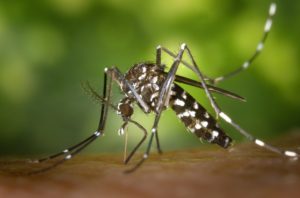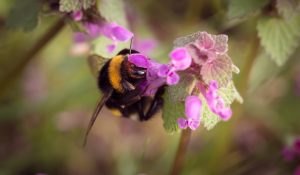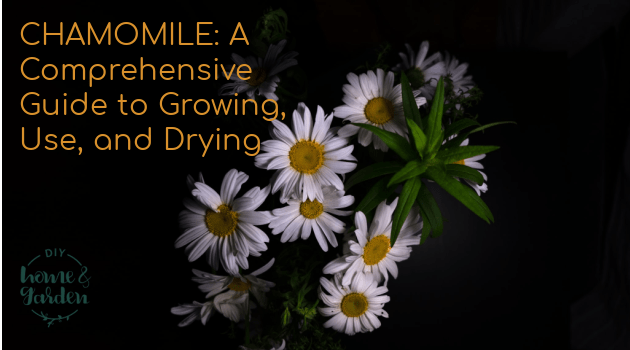All people don’t have the same reaction to mosquito bites and bee stings. Some people barely notice a bite, while others react with red and swollen welts that can be very itchy–not to mention painful. And, other folks have allergies that increase the risk of severe reactions.
However, one thing proves the same for all. You need to administer first aid if you receive a mosquito bite.
This information is valuable, as practically everyone gets bitten by a pesky skeeter at least once in their life—for those of us residing in warm climates, even more!
Both stings and bites cause a small, puncture wound–almost undetectable to the eye. This can be a spot where bacteria may enter the body.
Whether you have been attacked by a fly, a bee, a wasp, an ant, or some other insect, insect bites usually cause a mild reaction. Your body responds to the venom and proteins that insects inject into your body or through their saliva to your body.
This can lead to symptoms at the site of the bite or sting, such as:
- Redness
- Swelling
- Itching
- Bleeding

Bee stings and anaphylaxis (allergic reaction)
In the worst cases, people might also develop a severe allergic reaction to insect bites or bee stings. A severe allergic reaction is called anaphylaxis when they are bitten or stung by specific insects.
They experience life-threatening symptoms if they don’t receive immediate assistance. Those signs of an anaphylactic crisis include the following:
- Swelling of the face, lips, or throat
- Nausea and vomiting
- Feeling lightheaded or confused
- Low blood pressure
Once a doctor diagnoses a patient with this severe reaction, he or she should prescribe a medication called adrenalin. The patient can carry a preinstalled adrenaline auto-injector (such as EpiPen®) with them. This allows that person to inject the drug into the outer thigh muscle when a bite or sting occurs. It works fast to increase your blood pressure, stimulate the heart, and reduce the resulting airway swelling.
If you know for certain that you’re allergic to insect bites or bee stings, you should always carry this medicine with you. This precaution is true, especially if you are outdoors in areas where you may come across insects.
Of course, your first line of defense is to minimize contact–especially with bees, wasps, or hornets. When you see a beehive or the signs of a wasp nest, don’t remove it yourself–call in an exterminator, especially if you know you are allergic to their stings.
First aid treatment of mosquito bites and bee stings

What to do if a bee stings you or mosquito bites you:
If you show no signs of a severe reaction, treat the site of the bite or sting for minor symptoms as follows:
- For a bee sting, begin by removing the stinger if it’s still embedded in the skin. Remove it by carefully holding a flat-edged object, such as a knife or a credit card, over the surface.
- Avoid using tweezers to remove the sting, as pressing can release more venom.
- Wash the area of the bite with antibacterial soap and water.
- Place a cold compress or pack of ice on the area for about 10 minutes to relieve pain and swelling.
- Wrap ice or your ice pack in a clean cloth to protect the skin several times daily.
- Treat the wound with Calamine lotion (an antihistamine cream) or a paste of baking soda and water to the site to relieve itching and pain.
RELATED POST: Natural Mosquito Repellent Tips (Buzz Off Skeeters!)
Emergency treatment for a severe allergic reaction from a mosquito bite or bee sting
If you believe that someone has a severe bee sting allergic reaction, you must act swiftly:
- Call 911. Calmly and factually describe the situation to the dispatcher immediately.
- If you are the patient, and you’re all alone, contact the ambulance service before performing any other treatment.
- If you are with the patient (not you), ask the person if they have an adrenaline auto-injector. IIn that case, help them administer treatment with it according to the instructions on the label.
- Encourage him or her to stay calm, lie down quietly with the legs raised up, and stay still.
- If they start to vomit, turn them over to allow the vomit to drain and prevent suffocation.
- Most importantly, if the person becomes unconscious and stops breathing, start CPR. Continue compressions and breathing until medical help arrives.
- Never apply a tourniquet in this situation, as it will only make things worse.
- You should also avoid providing them anything to eat or drink.
6 Best Essential Oils for Mosquito Bites and Bee Stings
Many prefer to take a natural, holistic approach and apply essential oils for healing their insect bites or stings. Essential oils are highly concentrated distilled extracts of plants that have specific medicinal purposes. They are generally used today for health, cleansing, massage, and other therapeutic purposes.
Research and anecdotal studies show that some essential oils are a safe alternative under non-life-threatening circumstances.
These essential oils can aid in reducing the inflammation, pain, and itching from:
- Mosquito bites
- Bee stings
- Wasp stings
- Ant bites
- Flea bites
- Fly bites
So, you may be asking yourself the following question. What are the best essential oils for bee stings and insect bites? Take a look.
1 – Basil essential oil

Basil is a mild anti-inflammatory oil that can help with irritation. Antimicrobial properties in the plant prevent infection. This makes basil oil ideal for all types of insect bites, especially bee stings. A 2013 study documented the remarkable anti-inflammatory properties of basil. Although researchers only studied the efficacy of basil oil on mice, it was determined that the essential oil helps with inflammatory symptoms.
Anti-inflammatory properties are found in many basil species, including:
- Sweet basil
- Thai basil
- Holy basil
2 – Tea tree oil
This Australian-native essential oil was initially used by the Aborigines to treat coughs and colds, and sometimes even on skin issues.
Today, the same tea tree oil is used in the prevention and treatment of bacterial infections, mostly arising from insect bites.
The oil’s natural anti-inflammatory properties work by neutralizing the harmful effects of insect stings, thereby easing the itching, redness, pain, and skin swelling.
However, note that applying the oil to the affected area doesn’t guarantee immediate relief from itching, redness, or swelling. And as a result, calls for patience– comfort comes gradually.
3 – Camphor essential oil
Camphor essential oil comes in four varieties; yellow, blue, brown, and white. However, only the white grade is often utilized for medicinal purposes and aromatherapy (where it helps boost immunity, circulation, and relaxation).
The oil features anti-fungal and anti-bacterial properties that help protect against infectious viruses.
Also, it offers cooling effects with topical use. This sensation helps soothe insect bites. Additionally, it’s handy to keep around for alleviating skin issues such as redness, itching, inflammation, acne, rashes, and pains.
4 – Lavender essential oil

Lavender is widely known for its potent antimicrobial, antioxidant, antidepressive, and calming properties. Together, those make it one of the most popular essential oils in the world.
Applying lavender directly to your skin can offer relief from insect bite effects–mostly inflammation and pain.
It also helps alleviate dysmenorrhea–a condition often associated with cramping or pain in the lower abdomen.
Studies have shown that mixing lavender with other essential oils helps enhance its antimicrobial properties. That, in turn, makes it more effective on burns and cuts.
The oils that pair well are:
- Cinnamon essential oil
- Tea tree oil
- Clove essential oil
5 – Roman chamomile essential oil
Roman chamomile is an excellent moisturizer with a sweet fruity fragrance and a common ingredient of skin products.
It’s best known for its unmatched calming, soothing, anti-inflammatory, and antispasmodic properties–all courtesy of its primary components, consisting of esters.
Roman chamomile’s calming effect extends to skin irritation, redness, and swelling caused by bug bites. And its antiseptic properties help prevent infections arising from such bites.
6 – Eucalyptus essential oil
While effective at repelling mosquitoes, eucalyptus essential oil also has a cooling effect (usually felt on the skin) believed to reduce inflammation and relieve pain caused by insect bites.
However, similar to the other essential oils, you’ll have to dilute it first before using it on your skin.
7 – Thyme essential oil
Thyme essential oil exhibits antiseptic properties that are known to offer relief from itchy bug bites. This can enhance the healing of bites, burns, and minor cuts, while also preventing possible further infections of the existing wounds.
How to Apply Essential Oil to Insect Bites Safely
Essential oils should never be used in concentrated forms but instead be diluted with a carrier oil, lotion, or water–depending on where and what you intend to use it for.
Topical use
For direct application, mix 1 tsp of white vinegar with 5 drops of essential oil.
The vinegar, in this case, helps cleanse the wound while also soothing the sting. If you don’t have vinegar on hand, dilute it with your favorite carrier oil.
Consider using cotton rounds in the application process (and not fingers) to minimize infection risk.
Spray option
Spraying diluted essential oil on the bite area is equally effective as a direct application.
Get your spray bottle, fill it with water, and then in equal portions of 2-3 drops, mix your liquid carrier oil and essential oil for each ounce of water.
Shake well, and then spray on the bite area.
Bath treatment
Numerous bites on your body will definitely call for a holistic oil application, better known as an essential oil bath.
Mix the carrier oil with your preferred essential oil (this should be in equal portions of 15 drops). Then add to your bathing water.

Essential Oil for Bee Stings: Pros and Cons
Essential oils are a natural remedy to bug bites and help with other skin issues, including eczema, rashes, burns, cuts, and skin rejuvenation.
However, just like any other medication, the effectiveness may vary from one person to the other.
Exercise utmost care and caution when using essential oils as they’re known to trigger allergic reactions in some people.
For topical use, ensure you first dilute the essential oil. Otherwise, you may end up experiencing serious side effects like burns.
Begin with a small skin test before generous application.
Be Prepared to Give First Aid for Bee Stings and Mosquito Bites
Equip your home so that you can administer first aid for bee stings and mosquito bites.
Because these pests are so prevalent, you never know when you’re going to need those supplies.
Know the signs of anaphylaxis and how to assist a person who is in distress. And learn how to remove stingers and soothe the red bumps.



